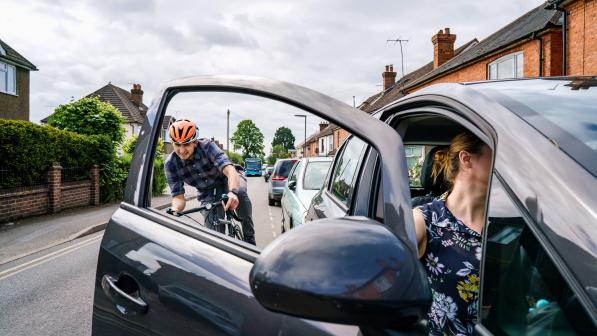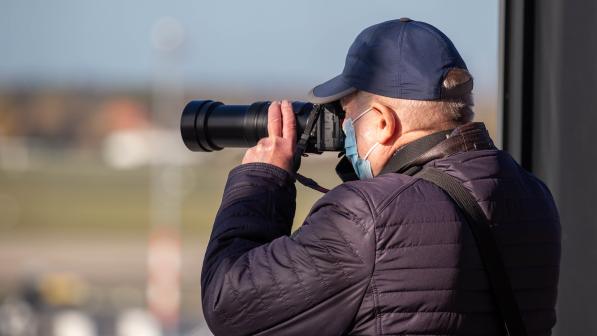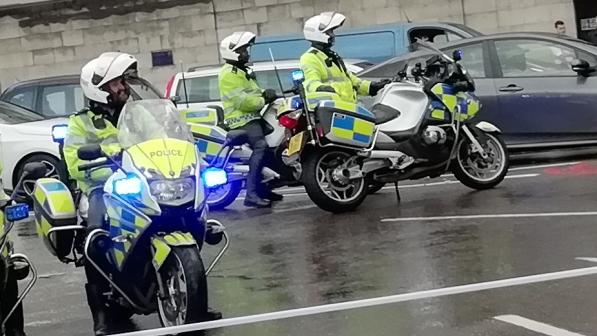Why reporting collisions and road deaths responsibly matters

We have reporting guidelines covering the reporting of domestic violence, because most of us realise that journalists have a responsibility not to reinforce damaging stereotypes or perpetuate narratives which blame the victim.
And we have reporting guidelines for the reporting on suicide, because how we talk about suicide matters, so journalists are advised to inform rather than sensationalise, choose their words carefully, and report this as a public health issue, rather than the way in which they would report a crime.
But we don’t have reporting guidelines for the reporting of road collisions, or at least we didn’t until yesterday.
Road deaths too commonplace to be news
Within the foreword to the report produced by the Active Travel Academy David Davies, the Executive Director for the Parliamentary Advisory Council for Transport Safety (PACTS), explains the challenge for journalists when someone dies or is seriously injured every 20 minutes in road collisions in the UK.
David Davies, executive director of PACTS said:
“Road deaths are often too commonplace to be “news” while, as a feature, road safety can seem worthy but dull. If there is an interesting hook, it is often because it is not representative.
"The public are ambivalent and contradictory. They readily complain about dangerous drivers and irresponsible cyclists and generally support tougher sentences – even life – for those guilty of causing road death.
"Yet the same people may object to lower speed limits or blocking rat runs for traffic, and take a relaxed attitude to their own safety and that of others.”
Dog bites man isn’t news
And there’s the dilemma.
Dog bites man isn’t news, but man bites dog is, so there’s a temptation to sensationalise road collisions rather than accurately reporting what’s known and what’s not.
It’s important to recognise that these guidelines haven’t been published to lambast journalists or editors, but rather, to help them. The guidelines were authored by journalist Laura Laker in collaboration with representatives from national roads policing, legal, academic and media experts, road safety charities including Cycling UK, and the National Union of Journalists’ ethics council, with advice form the independent press regulator IMPRESS.
Why wouldn’t you comply?
I’ll come back to IMPRESS shortly, but it’s probably worth explaining that the report contains ten suggested guidelines for media reporting of road collisions.
Rather than setting out all ten, I’ve highlighted six of them below in bold, with part of the supporting narrative for each. The two questions I’d ask publishers and journalists considering these new guidelines are, why wouldn’t you be comfortable complying with them, and how would compliance cause you a problem?
- At all times be accurate, say what you know and, importantly, what you don’t know. Often emergency services will release scant information and key details won’t emerge until an inquest or court case.
- Avoid use of the word ‘accident’ until the facts of a collision are known. Most collisions are predictable and before an enquiry or court case, the full facts are unlikely to be known. It is particularly important to avoid the word accident when someone has been charged with driving offences. Using ‘crash’ or ‘collision’ instead leaves the question of who or what is to blame open, pending further details.
- If you’re talking about a driver, say a driver, not their vehicle. This is particularly important when describing actions such as speeding, or leaving the scene of a crash.
- Journalists should consider whether language used negatively generalises a person or their behaviour as part of a ‘group’. Research shows that if people see a road user, such as cyclists, as an out-group, or less than human, they are more likely to act aggressively towards them on the roads. Be mindful that language insinuating there is a ‘war’ or ‘battle’ on the roads risks in itself inflaming tensions.
- Coverage of perceived risks on the roads should be based in fact and in context. Larger, faster vehicles have a greater potential to cause injury and death, while those on horseback, on foot and cycles are more likely to be seriously injured in a collision.
- Avoid portraying law-breaking or highway code contravention as acceptable, or perpetrators as victims. An example of this is stories of speed camera use somehow ‘targeting’ road users, or causing danger on the roads.
Crash not accident
The road victims charity RoadPeace has for years argued that language matters in the reporting of road collisions, and that crashes on the road be called crashes than rather than accidents, avoiding the language of denial which implies that what happened was unavoidable, and something we just have to accept.
These guidelines are therefore long overdue, and hugely welcomed, however the next step has to be to secure compliance.
IMPRESS and IPSO
I said I’d come back to IMPRESS, which has provided advice to support the development of these guidelines.
IMPRESS is a government approved press regulator with a standards code which many local press outlets sign up to. It’s fair to say that it’s the Editor’s Code of Practice monitored by IPSO (Independent Press Standards Organisation) which regulates most of the national print media, and IPSO has yet to adopt or endorse these guidelines.
What’s abundantly clear however, is that some of the publications regulated by IPSO would prefer not to have to comply.
Breaching IPSO’s code when reporting on the new guidelines
Take the Daily Mail, who published an article last September about the proposed collision reporting guidelines, falsely claiming in the headline that campaigners were calling for abuse of cyclists to be made a hate crime.
The article proceeded to suggest that the guidelines were intended to “stop the likes of Jeremy Clarkson poking fun at cyclists”, urge newspapers to “shame ‘criminal’ motorists for accidents with bicycles”, and ended with a quote from Howard Cox, founder of Fair Fuel UK, stating how “motorists would be repulsed” by the guidelines – which he had clearly either not read, failed to understand, or deliberately misinterpreted.
But the Daily Mail is regulated by IPSO, the report was inaccurate, and Laura Laker successfully complained to IPSO about the article, which ruled that the newspaper had breached the clause 1 accuracy provisions of the Editor’s Code, despite the Daily Mail denying any breach of the Code.
Showing some teeth
It’s fair to say that Cycling UK’s previous experiences raising complaints with IPSO about inaccurate and misleading reporting about cycling or cyclists didn’t leave us with a huge amount of confidence regarding the regulator’s willingness to show its teeth, but to be fair, it did so with Laura Laker’s complaint, and now has a chance to demonstrate that it’s prepared to fulfil its stated goal to uphold high standards of journalism – by signing up to the new guidelines.
Over the last few years I’ve seen hundreds of comments and complaints on social media about press reports or coverage of road traffic collisions, which in some way would be inconsistent with the tone of or in plain breach of the new guidelines. It’s likely to take a little time for the message to filter through, and for old habits to change, but you can help amplify the message.
If you read a sensationalised report of a road collision, which suggests that the victim was to blame when the facts are yet to be ascertained, or which minimises the consequences of road traffic offences, then please take a quick look at the new guidelines.You don’t need to spend a huge amount of time on this, and you don’t need to complain to the paper’s regulator. A short email to the paper’s editor with a link to the guidelines, and asking whether the editor will agree to comply with them won’t take much time, and it will demonstrate the public’s desire for responsible reporting on roads collisions, not just sensationalism.
Want to get more involved with campaigning for safer roads?




